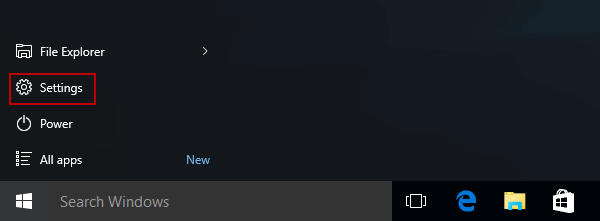

- #HOW DISABLE SECURE BOOT WINDOWS 10 INSTALL#
- #HOW DISABLE SECURE BOOT WINDOWS 10 DRIVER#
To do that, press the “Start key + R” to open the Run dialog box. With that, you know the current status of Secure Boot.įirst, we need to open the System Information tool.
 When not supported, you will see “Not supported.”. If Secure Boot is disabled, you will see “Off.”. If Secure Boot is enabled, you will see “On.”. Now, check the “Secure Boot State” field. The msinfo32, also known as the System Information tool, is very helpful to know if the Secure Boot is enabled, disabled, or unsupported. Otherwise, it will stop the boot process and takes you to the Windows recovery environment to fix the system.Ĭheck if Secure Boot is enabled from msinfo32 If all checks are passed, the firmware gives control to the OS and boots normally. The manufacturer or OEM provides these signatures (keys). The rise in firmware attacks these past few years makes Secure Boot an essential feature to have.Įvery time you start the PC, Secure Boot checks the signature of the UEFI firmware, boot drivers, and the operating system itself.
When not supported, you will see “Not supported.”. If Secure Boot is disabled, you will see “Off.”. If Secure Boot is enabled, you will see “On.”. Now, check the “Secure Boot State” field. The msinfo32, also known as the System Information tool, is very helpful to know if the Secure Boot is enabled, disabled, or unsupported. Otherwise, it will stop the boot process and takes you to the Windows recovery environment to fix the system.Ĭheck if Secure Boot is enabled from msinfo32 If all checks are passed, the firmware gives control to the OS and boots normally. The manufacturer or OEM provides these signatures (keys). The rise in firmware attacks these past few years makes Secure Boot an essential feature to have.Įvery time you start the PC, Secure Boot checks the signature of the UEFI firmware, boot drivers, and the operating system itself. 
If you don’t know, firmware attacks are almost impossible to detect once you are in the operating system because they load even before Windows itself and takes control of the system.
#HOW DISABLE SECURE BOOT WINDOWS 10 DRIVER#
Secure Boot is made to stop firmware and low-level driver attacks. It makes sure that the system only boots with trusted software.
PowerShell command What is Secure Boot?Īs the name implies, Secure Boot is a security feature built-in to your PC’s firmware (UEFI). This brief and straightforward article will show two methods to check Secure Boot status in Windows. If you don’t know whether Secure Boot is enabled, disable, or unsupported on your computer, you can use built-in tools to know the Secure Boot status. #HOW DISABLE SECURE BOOT WINDOWS 10 INSTALL#
For example, when Secure Boot is enabled, you cannot install alternate operating systems. OEMs generally disable Secure Boot for compatibility reasons. Even if your laptop or desktop computer supports Secure Boot, there is a high chance of it being disabled.







 0 kommentar(er)
0 kommentar(er)
